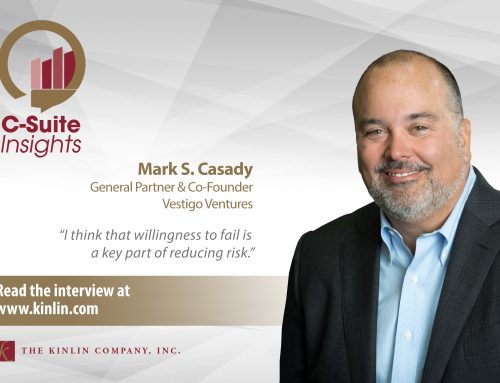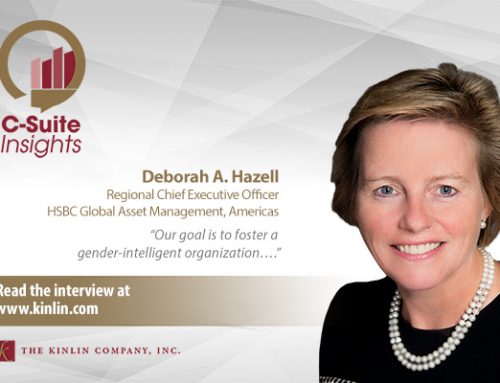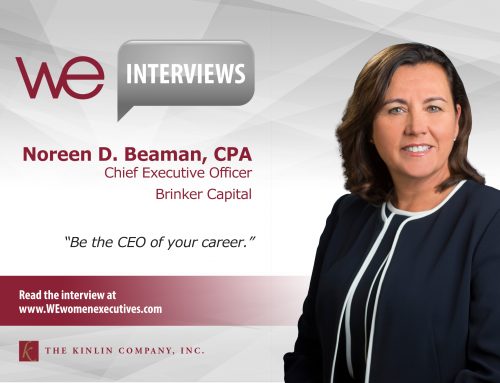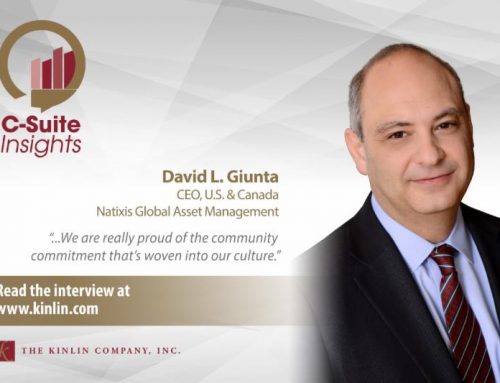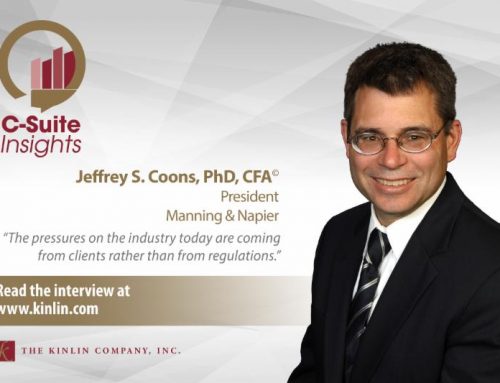 David Hunt
David Hunt
President & CEO
PGIM
David Hunt serves as the president and chief executive officer of PGIM, the trillion-dollar asset manager of Prudential Financial. A global business with about 3,500 employees in 31 offices located in 16 countries, PGIM offers a very wide range of asset classes, from public equities and public fixed income to private fixed income. The business is also the second largest global real estate manager, offering its global client base a broad range of real estate investment strategies that span the risk-return spectrum across debt and equity.
I recently sat down to talk with Hunt about trends in asset management and the role of gender diversity in the business. We were fortunate to have Catherine Verhoff, PGIM’s Chief Diversity Officer, join us for this conversation.
A set of trends that require accurate characterization
Given the breadth and depth of Hunt’s responsibilities as president and CEO of PGIM, I was eager to get his take on some of the industry’s hot button issues. Are there any trends that you find particularly worrisome or especially intriguing, I inquired.
“There are two trends we think are perhaps not adequately portrayed in the popular press. One of them is what some industry participants and the media have portrayed as an ‘active versus passive’ debate within the industry, which we think greatly misunderstands the issue. The second is the role that alternative asset classes can and should play in an investment portfolio.
“Allow me to start with the investors’ perspective, as I think that’s important. It’s only really in the last decade of investing that it’s been possible to buy beta or market performance inexpensively. At the moment, that’s particularly true in the US equity markets and less prevalent in most other asset classes. We believe this is a very good trend for investors. It’s important for an investor to be able to buy beta directly and that is not a question of active versus passive. It is a question of being able to buy the market cheaply and then use an actively managed portfolio to generate alpha.
“At PGIM, our active strategies are designed to work in an investor’s portfolio in such a way that they complement a selection of more easily accessible beta, which we believe also plays a role in many investors’ portfolios. In other words, this is a question of how alpha and beta should work together — and not a question of one or the other, which is how the debate has been misrepresented.
“It is our expectation that as the investments business continues to mature, it will be possible to buy more beta more cheaply over time, and we think this is a very good trend for investors. It should allow investors to lower their costs as well as allow them to more carefully tailor their portfolios to the factors that they want.
“Active managers who truly generate real alpha will do well in this format. In fact, we believe that as passive grows, it will be easier for active managers to add alpha. This is an argument that I think the industry has mischaracterized in terms of the direction of the overall industry. This is an argument that I think the industry has mischaracterized in terms of the direction of the overall industry.
“Alternatives assets are another issue that I believe has been poorly characterized in that their sole purpose is often assumed to be investment return. Certainly, investors do look to alternatives partly to generate a return, but originally the word alternative was developed because it was ‘alternative’ to the returns that were achieved in the equity markets. Therefore, portfolio diversification was actually the number one reason that people invested in alternatives, rather than simply the performance of the alternative asset class.
“Somewhere along the way, we began to misstate the purpose of an alternative, so here at PGIM we undertook our own study, looking back through 16 years and different market cycles to measure not only the performance but also the correlation and therefore the risk reduction benefit that alternatives actually provide in portfolios.
“What we found was that some alternatives really do add significant value. In particular, we found that real estate not only added important value on the return side, but also on diversification. We found that private equity added significantly on the return side, but a little bit less on diversification. We also found that the vast majority of hedge funds – with the exception of relative value hedge funds –didn’t help add much on the return spectrum, nor did they add much in terms of diversification.
“Alternatives are becoming better understood by sophisticated investors. Investors are now better able to separate where they’re getting real alpha and where they’re getting risk diversification – and they are investing in strategies accordingly. This understanding will reshape the alternative world in helpful ways, which will benefit investors in terms of better performance, lower fees and better risk diversification. It may mean that we will see less money flowing into certain types of hedge fund strategies, especially those that are essentially leveraged beta. We will probably see more flows into real assets classes like real estate and infrastructure, where you truly do get paid for taking a liquidity premium risk.”
A problem that comes from good news
Having gained a sense of Hunt’s views on active versus passive and alternatives, I was also keen to probe his feelings on global longevity. What do you see as the investment implications of this trend, I queried.
“We would put longevity solidly in the camp of problems that come from good news. The good news is that through advances in healthcare, we are seeing people living longer. That’s true right across the developed world, and we’re increasingly seeing the same effects in the developing world. This is very good news for human happiness, but it is unfortunately a challenge for pension plans or even individuals saving for their retirement. With longer lifespans, we now all have to save more during our working years to cover a much longer duration of our lives in retirement.
“Probably the best example of this is the data released by the Society of Actuaries last year that shows how long people will live. Corporate pension plans in the US must use these new tables to update their forecasts and models. As a result, many of our clients found that they suddenly had liabilities between four and eight percent higher than before.
“This has substantial implications for investors. Obviously, the average duration of a portfolio of liabilities is going up. It means that the value one places on long-term steady streams of income such as real estate or investments in infrastructure will go up. It also means that for individuals, the right asset allocation – given how long they’re likely to live in retirement – probably requires more risk assets than many of them use in their <largely beta-focused> portfolios today. In fact, at PGIM we use a proprietary glide path in our target date funds that includes alternatives and accounts for a longer set of longevity assumptions than the rest of the industry would typically use.”
A policy that’s a business imperative
Having addressed some of the more pressing industry trends, I turned the discussion toward another topic of great interest to me: gender diversity. In addition to having the chance to speak with Hunt about this important issue, I was also fortunate enough to have PGIM’s Chief Diversity Officer, Catherine Verhoff, join our discussion. What do you consider the most important thing that should be happening in the asset management sector to ensure more success for female executives, I asked them.
Hunt answered first.
“It really starts at the top – sixty percent of Prudential’s Board of Directors is diverse. We have the encouragement and backing to make progress on diversity right from the Board, a stance for which I’m grateful.
“I’ve done two things that I think are important in terms of moving this agenda forward, but which may sound slightly counter-intuitive to you. First, I’ve refused to talk about diversity as a separate topic. When I talk about diversity, I talk about it in the context of our business agenda. We need to have the best talent in our business because it is a business imperative, not because we think it’s a good thing to do or because it’s a legal requirement.
“We serve clients of all nationalities, all genders, all sexual orientations. So, by definition we must have a diverse employee base to fundamentally drive a business agenda and offer diversity of perspectives. It’s important that this be seen as a business imperative, and we need to get better at it because without a diverse work force, it is impossible to say we have the best talent in the industry.
“This view does mean that I often refuse to give talks on diversity. I will give a talk on the role of talent in our business and diversity will be addressed, but I won’t talk about it separately.
I think that in far too many companies, diversity is done as a corporate initiative that could be the same as sustainability or energy, and in my view, that will never succeed.
“This brings me to Cathy’s role. Cathy is our second chief diversity officer – the first was Judy Rice. Both were senior business executives on my management team for years before they took on this role. Judy was the president of our mutual fund business for many years and a peer to all the other business heads, and Cathy was our chief legal officer for many years – she knows the business and all of the senior people extremely well. As a result, both Judy and Cathy had the ability to work on this topic as peers with other senior leaders in our organization, which I think contributed to our progress on the issue. Cathy reports directly to me, as did Judy. This is different from an HR function and I think it’s important that it be seen as an important part of our talent agenda.”
Verhoff then stepped in to share her thoughts.
“I think the issue of diversity, especially gender equality, is very complicated and something that needs to be attacked from a lot of different directions. We have a senior women’s advisory council, comprised primarily of managing directors from across our eight different businesses, who work on programming for both junior and senior women. What we’re trying to do is equip some of the women in our pipeline with skillsets that we know women are either not born with or do not necessarily learn in the same way as men, such as networking, managing the confidence gap, and marketing yourself. We know that these areas have always been issues for women, so we try to address them with programming. We offer ‘strategy for success’ lunches twice a month, which are business-oriented, and have two substantive annual leadership conferences: a senior women’s all-day conference and a junior women’s all-day conference. Additionally, I established a ‘diversity and inclusion think tank,’ because I quickly realized we were not going to make any progress on this issue without engaging men. In fact, engaging men is probably first and foremost on my agenda, and I believe that PGIM is on the forefront of this initiative in terms of the asset management industry as a whole, as well.
“We know that we need to engage men in this dialogue because they are the vast majority of our middle to senior management. They’re the ones who make the decisions about hiring and firing, compensation and promotion, and who gets the plum assignments that allow somebody to show what he or she can do. We have to engage that group and help them to understand that it is a business imperative. Study after study – the Peterson Institute study, the McKinsey study, the Mercer study, the Morgan Stanley study – they all show that companies and teams that have gender diversity outperform those that don’t. To make progress, we have to get that message across and engage the men who are in the majority.
“My diversity and inclusion think tank is made up of about 20 senior executives from each one of our business groups. It’s about fifty percent white men and fifty percent people of color, women, and various underrepresented communities, including the LGBTQ community and veterans. After the group was founded, members spent several months getting up to speed on the issues and then identified five different areas that they wanted to address. One is engaging men as allies. Another is management training and development. In May, for example, we’re rolling out a program for our VPs – half-day training sessions on what we call inclusive leadership. We realize that people tend to get promoted without ever having management training, and it’s important for people to understand that when you’re managing people, you have to manage everybody, not just the person with whom you’re most comfortable.
“We have a lot of challenges with management. Millennials have different expectations than Baby Boomers or Gen Xers. Women have responsibilities outside of work at different points in their lives and we need to understand how to accommodate them. People with disabilities and veterans have different sets of issues, expectations and experience. Our inclusive management training is meant to help people understand that it’s a benefit to have teams of people who have very different views than you. Hiring people who are a ‘good fit’ is not necessarily the best management idea, because sometimes you want disruptors – people who are going to tell you things that you don’t always want to hear, but who bring a new perspective to the table.
“We’re trying to show managers that diversity of thought is really important to the success of a business and we’re coming at it from a lot of different perspectives. We’re working on creating a pipeline at the bottom and have a lot of external relationships with organizations including Girls Who Invest, the Jackie Robinson Foundation, and Out for Undergrad to help develop our pipeline. We’ve also explored a lot of new entry-level recruiting ideas as well as networking events for women in the industry to try to recruit senior talent, etc.
“We’re trying to be creative. Having people understand the business imperative is really important, but we also know that a lot of it is about winning hearts and minds. Men who have daughters, men who have working wives, and men who have a heightened sense of fairness are great allies.”
![]()

